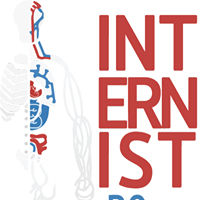/ Not yet recruitingNot Applicable Identification of Vitamin C Deficiency in Hospitalized Adults Through a Systematic Approach Vs. Traditional Medical Judgment: a Before-and-After Observational Study
Brief Summary of the Study The goal of this observational study is to assess the incidence of vitamin C deficiency among hospitalized adults presenting with hemorrhagic signs. The study will also evaluate the effectiveness of a standardized screening protocol compared to traditional clinical judgment.
The main questions it aims to answer are:
What is the incidence of vitamin C deficiency in hospitalized patients with hemorrhagic symptoms? Is a standardized screening protocol more effective than traditional clinical judgment in identifying vitamin C deficiency? Is vitamin C deficiency associated with anemia, other micronutrient deficiencies (folate, B12, albumin, iron), or infectious conditions? Does vitamin C deficiency impact hospital length of stay? Researchers will compare a systematic screening approach based on predefined hemorrhagic criteria (e.g., hematuria, ecchymosis, epistaxis, petechiae, gastrointestinal bleeding, or intracranial hemorrhage) to the traditional physician-judgment approach to determine its effectiveness in identifying vitamin C deficiency.
Study Design
Participants will:
Be hospitalized adults (≥18 years old) presenting with documented micro- or macroscopic hemorrhagic signs.
Undergo vitamin C level assessment either as part of the standardized screening protocol (prospective arm) or based on physician judgment (retrospective control group).
Have additional clinical and laboratory data collected, including hemoglobin levels, platelet count, iron status, vitamin B9/B12 levels, and other relevant parameters.
This non-interventional study will not modify the standard of care but will systematically assess the prevalence of vitamin C deficiency in at-risk patients and evaluate the utility of a structured screening protocol.
/ Not yet recruitingNot Applicable Exploring the Multimorbidity Burden in Primary Care in Romania
Multimorbidity, the coexistence of two or more chronic conditions, is a growing challenge in primary care, significantly impacting healthcare systems worldwide. Its prevalence is rising, particularly among socioeconomically disadvantaged populations, leading to increased healthcare utilization, polypharmacy, and fragmented care. Current clinical guidelines primarily address single-disease management, failing to provide comprehensive strategies for multimorbid patients.
Although multimorbidity has been extensively studied in Western Europe and North America, data on its burden in Romania and other Eastern European countries remain scarce. There is limited knowledge on how primary care physicians (PCPs) in Romania perceive and manage multimorbidity, particularly regarding clinical decision-making, interdisciplinary collaboration, and adherence to treatment guidelines.
This cross-sectional study aims to explore the impact of multimorbidity on Romanian PCPs, assessing their challenges in managing complex patients, their clinical and therapeutic approaches, and their level of comfort with deprescription and guideline adaptation. We will conduct a nationwide survey among primary care physicians and ambulatory specialists to evaluate the prevalence of multimorbidity in their practice, the difficulties they encounter, and potential strategies to improve care delivery.
Key outcomes include the identification of multimorbidity prevalence in ambulatory settings, challenges related to consultation time and treatment complexity, barriers to interdisciplinary collaboration, and the balance between defensive and proactive medicine. Findings will provide valuable insights to guide policy changes, enhance clinical training, and promote patient-centered approaches in primary care
/ CompletedNot Applicable Evaluation of Risk Factors for MASLD and Probability of Advanced Liver Disease in a the Romanian Arm of the the European Health Examination Survey (EHES)
This study aims to evaluate the presence of Metabolic Dysfunction-Associated Steatotic Liver Disease (MASLD) risk factors and estimate the probability of advanced liver disease in a Romanian cohort from the European Health Examination Survey (EHES). Using standardized clinical, anthropometric, and laboratory data, the study will assess metabolic and alcohol-related contributors to liver disease. The primary focus is to identify an at-risk MASLD population, characterize associated metabolic risk factors, and evaluate disease awareness through the presence of ICD-10 diagnostic codes for liver disease.
The study applies the Forns Score as a validated non-invasive tool for assessing liver fibrosis risk and incorporates the latest EASL-AASLD 2024 guidelines to define MASLD, MASH, Alcohol-Related Liver Disease (ALD), and MetALD (combined metabolic and alcohol-related liver disease). Additionally, it will explore potential underdiagnosis rates of liver disease by comparing clinical risk markers with documented diagnoses.
The study is a post hoc, cross-sectional, retrospective analysis and does not involve new data collection or patient contact. Data analysis will be performed using descriptive statistics, subgroup comparisons, and multivariate models to assess relationships between metabolic risk factors, MASLD probability, and liver disease awareness. This research will contribute to the understanding of MASLD epidemiology in Romania and inform public health strategies for early detection and prevention.
100 Clinical Results associated with Internist.Ro
0 Patents (Medical) associated with Internist.Ro
100 Deals associated with Internist.Ro
100 Translational Medicine associated with Internist.Ro







